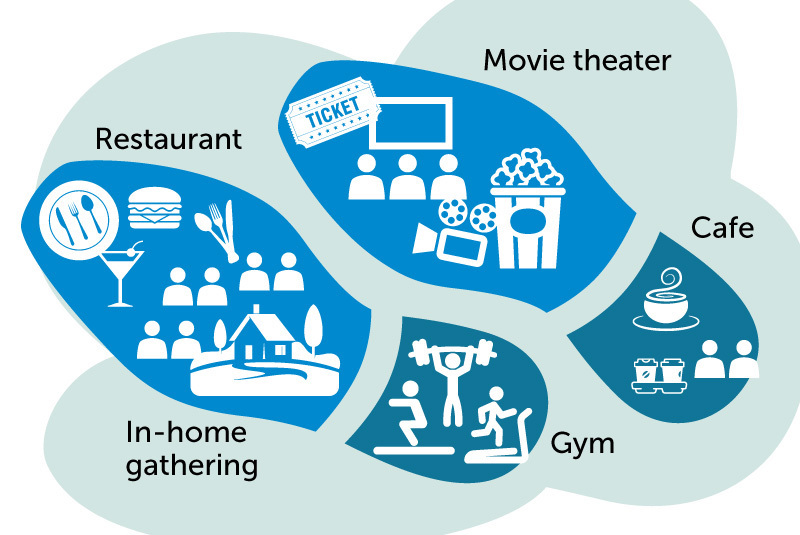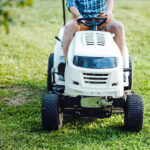Hunker down and reduce your ‘transmission footprint’

In the midst of one of the worst COVID-19 surges so far, we finally have some good news. Two coronavirus vaccines, made by pharmaceutical companies Pfizer and Moderna, appear to be highly effective and safe. While data are still preliminary, it seems that the Pfizer vaccine may also have excellent efficacy in older adults. While this news is cause for celebration, it doesn’t mean we can throw aside our masks and get back to “normal” life. Not yet, anyway.
“The news of these vaccines is very encouraging, and it seems like the end of the pandemic may be in sight.” says Dr. Rick Malley, an infectious disease specialist at Boston Children’s Hospital. But, he cautions against taking the news as a cue to abandon the safety measures recommended by the Centers for Disease Control and Prevention (CDC), such as social distancing and wearing masks.
Why you should double down now
“While a vaccine seems imminent, the epidemic is spreading very widely in many communities now, and it’s not the time to start expanding your risk,” says Dr. Malley. “I encourage people not to lower their guard, but instead to double down in efforts over the next few months, while we ride out what we hope will be the last big wave of the virus.”
“Since nothing comes without risk, if you decide to do one activity that carries some risk, you should try to reduce as many of your other risks as you can.”
– Rick Malley
This is especially important now, as the holidays approach, and people are tempted to celebrate with those outside of their households. “The next few months will be hard,” says Dr. Malley. “But if anything, news of these vaccines should reinvigorate people to be more careful, because we can now see a light at the end of the tunnel and know we will not have to live this way forever.”
Reduce your ‘transmission footprint’
Dr. Malley says though many people are tired of the restrictions due to COVID-19, it’s important for everyone to continue do their part in reducing community spread, especially as the virus is surging. He calls this lowering your “transmission footprint.”
“Everybody makes their own decisions about what risks they are willing to take, based on what is most important to them,” he says. “Since nothing comes without risk, if you decide to do one activity that carries some risk, you should try to reduce as many of your other risks as you can,” says Dr. Malley.
For example, you might feel like you absolutely need to go to the gym while they remain open. But data suggest that this activity carries a significant risk to both yourself and your community. So, if you decide to go to the gym, make sure you do fewer other things that may increase your risk, and your risk to the community, such as attending an indoor gathering, or eating at a restaurant or carpooling with people who are not part of your “bubble” even while wearing a mask.
“If someone does all of those higher-risk activities, then their transmission footprint is going to be very large,” says Dr. Malley. “But if everyone does their part by keeping their transmission footprint as small as possible, we can reduce the risk of transmission in our communities, though the risk will never be zero.”
How to rate your risk
While there is no way to provide a specific risk level for every activity in your particular area, you can gauge your level of risk by knowing the what makes a given activity more or less risky.
Here are some factors that make an activity higher risk:
- You are within 6 feet of people not in your household (the closer the contact, the higher your risk).
- It is held indoors.
- You or others are singing, shouting, chanting, or breathing heavily.
- You are interacting with many people.
- People around you aren’t wearing masks.
- The amount of time you spend at an activity or event—generally the longer the time, the higher your risk.
These factors make an activity lower risk:
- You can stay at least 6 feet away from others.
- Everyone is wearing a mask.
- It is held in an outdoor space.
Other factors you may want to consider:
- the amount of virus currently spreading in your community
- how far you have to travel to get to the activity, and how you will get there
- whether you live with people who may be at risk for severe illness from COVID-19, such as older adults or those with an underlying health condition
Read more about Boston Children’s response to COVID-19.
Related Posts :
-

No limitations: How Flora found answers for MOG antibody disease
Flora Ringler’s fifth birthday didn’t turn out as she had hoped. She and her family were vacationing in ...
-

What orthopedic trauma surgeons wish more parents knew about lawnmower injuries
Summer is full of delights: lemonade, ice cream, and fresh-cut grass to name a few. Unfortunately, the warmer months can ...
-

Partnering diet and intestinal microbes to protect against GI disease
Despite being an everyday necessity, nutrition is something of a black box. We know that many plant-based foods are good ...
-

‘They never stopped trying to figure out what was happening’: RyennAnne’s encephalitis journey
When 5-year-old RyennAnne Hurst developed a bad sore throat last summer, her doctor thought she might have strep and prescribed ...





